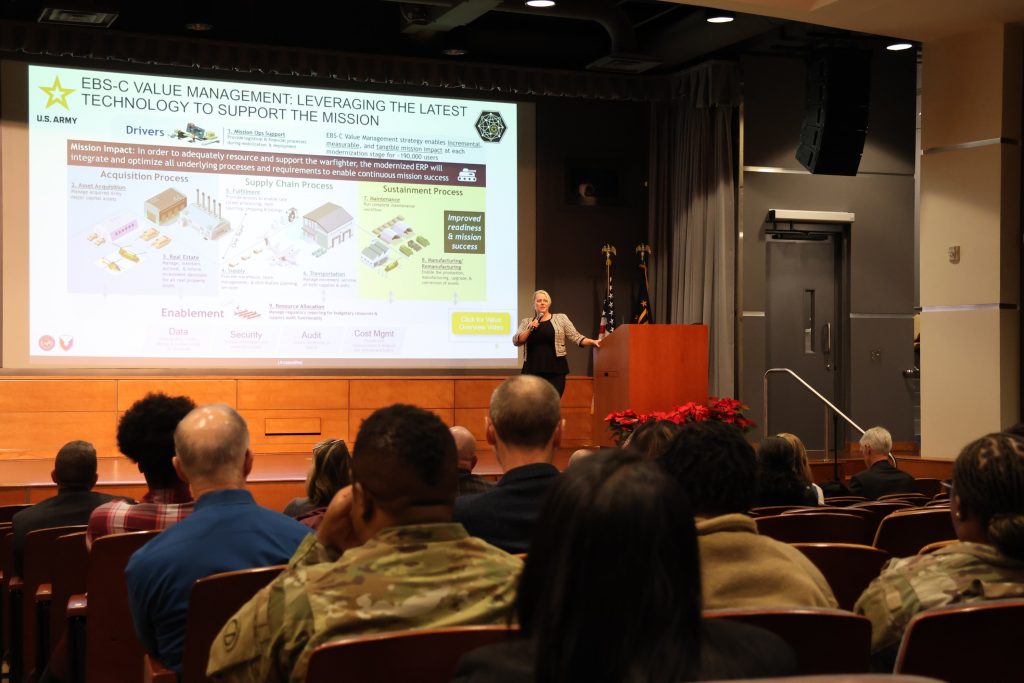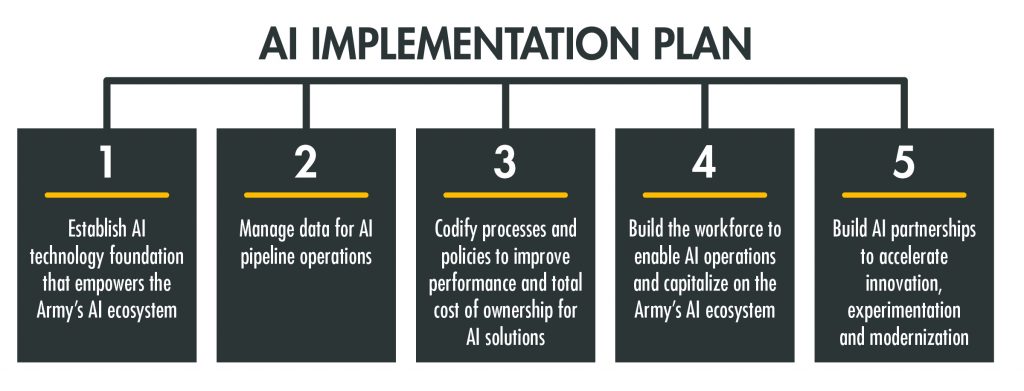
MOSA MUSKETEERS: Muskets, like the ones fired here in Boston by participants in the U.S. Military Entrance Processing Command’s (USMEPCOM) Military Member of the Year competition, were the first Army item to employ the modular open system approach, which relies on the design and development of systems with highly interoperable and reusable components. (Photo courtesy of USMEPCOM)
Architecting for adaptability with the Army.
by Jennifer Swanson
In 1798, newly independent Americans faced the threat of war with France, at that time a formidable military power. The U.S. needed to quickly re-arm, so the Army signed a contract with Eli Whitney for 10,000 muskets. But this was not just an order for muskets. It called for a new, modular-style technology: interchangeable parts.
Before this, each Army musket was handmade and essentially unique. When muskets of that era broke or were damaged, they were usually discarded and replaced because repairs were too complicated. Standardized interchangeable parts reduced the cost of buying, repairing and sustaining military equipment and made mass-production possible. The Army was quick to adopt this technology. It mandated that the arsenals in Harpers Ferry, West Virginia, and Springfield, Massachusetts, adopt precise and standardized production methods. That mandate led to the first mass-produced musket with interchangeable parts, the M1842.
More recently, the Modular Open Systems Approach (MOSA) has built upon this history by encouraging the design and development of systems with highly interoperable and reusable components. With this approach, the government owns the key system interfaces that allow vendors to build physical modules that are swappable on the intended platform. This makes it easier, faster and less expensive to develop new systems, add capabilities, upgrade older systems and maintain current ones. Most importantly, this approach enables the Army to replace products easily and cost-effectively as new technology becomes available, ensuring our Soldiers always get the most cutting-edge capabilities.
Today, efficiency in hardware development remains important, but the pace of development in the software world has grown exponentially. To maintain overmatch in peer competition, the Army must adapt to the unprecedented explosion of software and technologies driven by artificial intelligence (AI). To that end, the Army must be able to develop and deploy digital capabilities at speed and at scale:
- At speed: agility and accelerated development and delivery of software upgrades and innovative solutions.
- At scale: rapidly and seamlessly integrate and compose disparate software solutions and orchestrate them into larger, end-to-end capabilities, even across system and program boundaries.
Just as modularity has facilitated incredible advances in hardware, the Army must now apply the principles of modularity in the burgeoning digital space.
INTEROPERABLE AND INTERCHANGEABLE
Before we explore the nuts and bolts of digital modularity, it’s valuable to consider two guiding concepts: interoperability and interchangeability.
The IEEE Standard Computer Dictionary defines interoperability as “the ability of two or more systems or components to exchange information and to use the information exchanged.” This is achieved through the adoption of open standards for networking protocols, messaging formats and application programming interfaces (APIs). Such standards enable disparate software systems, possibly developed by different vendors using varied technologies, to connect and communicate effectively.
However, the mere exchange of data is not sufficient by itself. In an enterprise context, the real value is often realized by integrating two or more systems or components to form a bigger, more powerful capability—for example, the ability to plug one sensor device into multiple weapon system platforms, or the option to deploy one machine learning algorithm in multiple system environments and have it function as expected. As the Army continues to expand its capabilities, the concept of interchangeability becomes equally vital. This involves seamless substitution of one system or component with another, enhancing the effectiveness of the overall solution while mitigating risks associated with vendor-lock, supply chain vulnerabilities and scheduling pressures. It also reduces costs and facilitates upgrades.
Embracing interoperability and interchangeability in software allows us to enjoy the benefits of MOSA in the digital realm, ensuring that our technological infrastructure is robust, versatile and future-ready.

THE VIEW FROM THE SUMMIT Johanna Sears, director of accounting and audit for EBS-C within the Office of the Assistant Secretary of the Army for Financial Management and Comptroller (OASA(FM&C)), addresses attendees of the Army Audit Summit, held Dec. 14, 2023 in Washington, D.C. By applying MOSA concepts, EBS-C, the Army’s flagship business system, will replace five other large legacy business systems. (Photo by Matt Leonard, OASA(FM&C))
BUILDING BLOCKS FOR DIGITAL MODULARITY
Building for interoperability and interchangeability starts with open APIs, which enable software applications to communicate and share data across various platforms. More importantly, open APIs are platform-agnostic; they are not confined to any proprietary system, which broadens their utility across different software products. By standardizing how solutions interact and exchange data, open APIs facilitate the seamless integration of new products into an existing framework. This standardization ensures that introducing new products, or replacing old ones, can be accomplished without disrupting the underlying system architecture. The result is a flexible, robust digital infrastructure that supports easy upgrades and enhancements.
For example, the Enterprise Business Systems – Convergence (EBS-C)—the Army’s new flagship business system—will replace five other large legacy business systems. The program is applying MOSA concepts by separating the underlying operating platform from a new “agility layer.” The agility layer provides a separate software layer that hosts an ecosystem of applications and data products to enable interoperability and interchangeability. Using open APIs in this layer makes it easy to incorporate solutions from third-party vendors, ensuring the Army can continue delivering the best capabilities cost-effectively and rapidly.
While exposing open APIs is a critical first step toward modularity, it is not sufficient on its own. Many vendor solutions, despite boasting open APIs and adherence to open standards, suffer from proprietary and tightly coupled implementations that lurk beneath the surface of the open facade. As a result, these solutions are not truly interchangeable and fail to meet MOSA objectives.
This is where reference architectures come into play. A reference architecture provides a collection of architecture design artifacts and templates that outline recommended components and patterns. These invaluable guides instruct development teams on how to effectively realize their specific implementations of the solution and ensure that all implementations adhere to broader standards and principles for true modularity.
Reference architectures encompass design patterns that offer proven, repeatable abstractions for implementing a targeted mission functionality. By applying the right design patterns, substituting products for replacements is relatively painless.
An example of a reference architecture is the Unified Data Reference Architecture (UDRA) 1.0, co-developed by the Deputy Assistant Secretary of the Army for Data, Engineering and Software (DASA(DES)) within the Office of the Assistant Secretary of the Army for Acquisition, Logistics and Technology (ASA(ALT)) and the Army Chief Data and Analytics Officer in close collaboration with industry. Released in March 2024, the UDRA provides the reference for moving Army capabilities toward data centricity. UDRA is “MOSA for data,” defining a modular data architecture that enables broader and faster sharing of data. UDRA, which we outlined in “Quarterbacking Digital Transformation” in the Winter 2023 issue of Army AL&T magazine, is in direct support of Reform Initiative 11. (See Sidebar.)
|
ENABLING MODERN SOFTWARE DEVELOPMENT AND ACQUISITION PRACTICES On March 11, 2024, Hon. Christine Wormuth, Secretary of the Army, signed Army Directive 2024-02, Enabling Modern Software Development and Acquisition Practices. This policy was spearheaded by Margaret Boatner, deputy assistant secretary of the Army for strategy and acquisition reform within ASA(ALT). It was the culmination of work led by DASA(DES) to leverage five pathfinder programs to identify and resolve obstacles to implementation of modern software practices in the Army. This directive drives the Army to update many processes that software programs are concerned with, including how we develop requirements, determine cost, issue contracts and test. Boatner led the monumental effort to write the policy and coordinate it across the Army. An integrated product team has been established and has begun implementation of the initiatives identified in the directive. Each task lead will update Army senior leadership monthly until implementation is complete. |
BRINGING ARCHITECTURE TO LIFE
The concept of modularity for digital systems can be difficult to grasp as it centers on concepts that are somewhat abstract. Let’s consider an analogy:
Think of reference architectures as the blueprints and architecture products for a housing development. These documents outline various house designs, structural guidelines and zoning laws that dictate what can be built, but they allow for variations in materials, interior layouts and exterior styles according to builder or homeowner preferences. The blueprints provide a broad framework that ensures safety and coherence but offers flexibility to meet diverse needs and tastes.
Open APIs can be likened to the standard interfaces and connections within the homes, such as electrical outlets, plumbing connections or even the standardized fittings for fixtures and appliances. Just as electrical outlets have a standard design to allow any appliance with a corresponding plug to connect and operate, open APIs provide a standardized way for different software components or services to connect and communicate. These APIs ensure that regardless of the manufacturer or developer, products or software can interact seamlessly within the system. Just as a homeowner might replace an old appliance with a new one without needing to rewire the house, users of a system with open APIs can swap out or upgrade components like software modules without overhauling the entire system.
But there are times where an additional level of understanding is needed. This is where our final MOSA building block comes into play: reference implementation.
A reference implementation is like a model home in that housing development. It’s a fully constructed house, built according to one specific set of blueprints and showcasing what a finished home could look like when those plans are followed to the letter. It includes choices on components that represent one way to interpret the blueprints.
A reference implementation is a concrete, “opinionated” application of a reference architecture, along with relevant standards and specifications. It serves as a practical demonstration of how the reference architecture can be effectively used, allowing teams to observe the key concepts and functionalities in action. In this context, “opinionated” refers to the specific choices and decisions made by the authors to exemplify their interpretation and recommendations within the broader framework established by the architecture.
An example of a reference implementation available now is the Unified Data Reference Implementation hosted in the Innovation Exchange Lab (IXL). Resulting from a partnership between DASA(DES) and the U.S. Army Combat Capabilities Development Command’s Command, Control, Communications, Computers, Cyber, Intelligence, Surveillance and Reconnaissance Center, the IXL offers a cloud-accessible environment that vendors and programs can use to demonstrate plug-and-play interoperability of potential new capabilities with the UDRA 1.0. Additional reference architectures will be accessible through the IXL in the future. The IXL currently supports Impact Level (IL) 2 security requirements with IL 5 support coming later in 2024.
REAPING THE BENEFITS
The efficiencies garnered from MOSA’s architectural approach are not merely advantageous, they are essential. As we navigate a battlespace that is evolving with unprecedented speed, the capacity to adapt swiftly and efficiently is a fundamental requirement, not a luxury.
Digital modularity offers several key advantages that are critical to meeting the challenges of modern warfare:
- It significantly shortens the capability development and deployment life cycles, enabling our forces to meet new and dynamic mission requirements swiftly.
- It facilitates the incremental and continuous introduction of innovative capabilities, ensuring that technological advancements are seamlessly integrated and immediately beneficial.
- It enhances the ability to orchestrate operations across multiple missions and between various branches of the Army, other services and coalition partners, promoting a more unified and effective approach to military engagements.
- It fosters a diverse and competitive industrial base, reducing reliance on single vendors and thereby minimizing risks associated with vendor lock-in.
- It diminishes the risks posed by rapid technological changes, enhancing the resilience and flexibility of our military enterprise.
- It lowers overall development and sustainment costs, ensuring that resources are allocated efficiently and strategically.
The path of architecting a fully adaptable force requires concerted efforts from stakeholders across the Army. To spearhead this crucial initiative, DASA(DES) is developing the Modern Software Framework (MSF), a cornerstone in building the infrastructure necessary for embracing digital modularity.
The MSF provides:
- The basis for defining reference architectures, enabling the community to develop new ones as needed.
- Prescriptive guidance and guardrails on how to achieve modularity objectives in software architecture and design, as well as how to assess MOSA maturity in software programs.
- A repository of repeatable, vendor-agnostic design patterns to reduce proprietary and suboptimal software implementations.
- A lexicon of fundamental concepts, principles and relationships, giving ASA(ALT) a shared understanding independent of vendor technologies and implementations.
The ASA(ALT) community will have access to version 1.0 of the MSF in September 2024. This framework is not just a tool but a transformational strategy that will empower our forces, enabling them to thrive in the complex and fluid environments of both today and tomorrow. By collaborating for digital modularity, we are not just preparing for the future; we are actively shaping it, ensuring that our military remains robust, reactive and ready to face whatever challenges may arise.
CONCLUSION
Digital modularity is pivotal in the digital transformation of the Army. It also forms the bedrock for deploying AI technologies swiftly and at scale. A strategic approach is essential for the effective adoption and implementation of AI. (See Figure 1.)

Figure 1: ON A CONTINUUM: An integrated product team has begun implementing these 12 initiatives, issued by DOD to support digital transformation. (Image by DASA(DES)/U.S. Army Acquisition Support Center)
The DASA(DES) team is leading the charge on implementation of a 100-day AI plan, which is designed to strategically outline our AI-related investments in science and technology, catalog AI requirements across our entire portfolio and address challenges in the AI landscape, such as evolving testing methodologies. Furthermore, this plan emphasizes strengthening the security of our AI capabilities to ensure that the technologies we develop are dependable and trusted by our Soldiers. In a future issue, we will delve deeper into AI implementation across ASA(ALT) and discuss the details outlined in Figure 2.

Figure 2: STEPWISE PROGRESSION This five-step AI implementation plan outlines AI-related investments made by DASA(DES) in science and technology, catalogs AI requirements across the organization’s portfolio and addresses challenges in the AI landscape. (Image by DASA(DES)/U.S. Army Acquisition Support Center)
For more information on digital transformation initiatives within DASA(DES), follow us on LinkedIn at https://www.linkedin.com/in/dasa-des/ and go to our website at https://www.army.mil/dasades.
JENNIFER A. SWANSON is the deputy assistant secretary of the Army for data, engineering and software. She is a Senior Executive Service member who leads implementation of modern software practices, including Agile software development and DevSecOps, data centricity and digital engineering, across ASA(ALT). She holds an M.S. in software engineering from Monmouth University and a B.S. in industrial and systems engineering from the University of Florida. She holds DAWIA Practitioner certifications in program management and in engineering and technical management.







